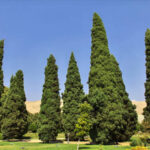When someone searches for “the Ongs”, the curiosity is often about more than just a surname. The Ongs represent a lineage that has traveled across countries, languages, and centuries, adapting to each culture while preserving a quiet sense of identity. To understand the Ongs is to dive into history, migration, family tradition, and cultural transformation. Whether you encounter the name in Southeast Asia, Europe, or North America, it carries stories of resilience, adaptation, and influence that go beyond mere genealogy.
This article explores the Ongs: their historical origins, migration journeys, cultural contributions, and how the name continues to shape identities in modern times.
The Historical Origins of the Ongs
The surname Ong is deeply rooted in Chinese tradition, with multiple interpretations depending on regional dialects and transliterations. In Mandarin, it is often connected with the character Wáng (王), meaning “king.” When spoken in Hokkien or Teochew, Wáng transforms into Ong, creating one of the most recognizable names in Southeast Asian Chinese communities.
Over centuries, the Ongs spread from China to Singapore, Malaysia, the Philippines, Vietnam, and later to Europe and the Americas. The name itself reflects not just royalty but also continuity—a lineage that traces itself back to dynastic times.
At its core, the Ong surname is more than a label: it embodies a historical link to leadership, governance, and resilience.
Migration and the Spread of the Ongs
The First Waves of Migration
During the Ming and Qing dynasties, trade routes flourished across Asia. Many Ong families migrated from southern China to coastal regions of Southeast Asia. They were merchants, traders, and craftsmen who brought not only goods but also cultural traditions.
By the 19th century, as colonial economies demanded labor, Ong families migrated to British Malaya, Dutch-controlled Indonesia, and Spanish-ruled Philippines. Some became plantation workers; others established businesses that grew into dynastic wealth.
Modern Diaspora
In the 20th century, political unrest and opportunities abroad prompted Ong families to emigrate further—to Canada, the United States, and Australia. Today, Ongs can be found across the globe, participating in politics, academia, arts, medicine, and technology.
Their story mirrors the broader Chinese diaspora: resilience in the face of displacement, reinvention in foreign lands, and the blending of tradition with modernity.
Cultural Identity of the Ongs
The Ongs are not bound solely by a surname; they often share traditions that reflect a hybrid identity. These traditions evolve differently depending on geography.
- In Southeast Asia – Ong families often balance Chinese rituals with local customs. For example, an Ong family in Singapore may celebrate both Lunar New Year and Hari Raya with neighbors.
- In Western nations – Ongs often embody duality: honoring ancestral traditions while integrating into Western culture. This duality becomes most apparent in intergenerational dialogues, where elders emphasize heritage and younger Ongs redefine what it means to belong.
Cultural identity, for the Ongs, is fluid. It is neither fixed in ancestral China nor fully absorbed into new homelands—it is a blend that reflects global belonging.
Notable Contributions of the Ongs
The Ong surname has appeared across history in multiple fields:
- Politics: Ong Teng Cheong, the fifth President of Singapore, exemplified leadership rooted in modern governance while maintaining traditional values.
- Academia: Walter J. Ong, an American Jesuit priest, revolutionized communication theory with his exploration of orality and literacy.
- Arts and Media: Ong Keng Sen, a prominent theater director from Singapore, pushed boundaries in intercultural performance.
- Business: Countless Ong families across Southeast Asia have established multigenerational enterprises in shipping, trade, and finance.
These examples highlight the Ongs’ adaptability. Whether in intellectual pursuits, governance, or commerce, the Ongs demonstrate an ability to shape the world around them.
The Ongs and Family Traditions
The surname is inseparable from the family traditions it carries. Many Ong families emphasize filial piety, ancestral worship, and community solidarity.
One practice still common among Ongs is the maintenance of genealogical records. Known as jiapu, these records preserve family history across centuries, ensuring that each generation remembers its roots.
Another notable tradition is family reunions, especially during Lunar New Year. In many Ong households, three or four generations gather under one roof to honor ancestors, share meals, and pass down oral histories.
Table: Geographic Presence of the Ongs
| Region | Historical Arrival | Current Presence | Notable Aspects of Ong Identity |
|---|---|---|---|
| Southern China | Ancient dynastic times | Moderate, mostly urban | Root surname, traditional clans |
| Singapore | 19th century | Strong | Political, business leadership |
| Malaysia | 19th century | Strong | Cultural integration with Malay and Indian traditions |
| Philippines | 17th century | Strong | Syncretic culture with Spanish influences |
| United States | 20th century | Growing | Academic, entrepreneurial contributions |
| Canada | 20th century | Growing | Multicultural integration, education |
| Australia | 20th century | Steady | Professional and political engagement |
Modern Challenges for the Ongs
The Ongs today face challenges common to many diasporic families:
- Language Loss: Younger Ongs often no longer speak the ancestral dialects (Hokkien, Teochew, Cantonese).
- Cultural Dilution: Intermarriage and migration sometimes weaken traditional practices.
- Identity Negotiation: Many younger Ongs struggle with balancing modern global identity while preserving their ancestral roots.
Despite these challenges, the Ong surname continues to thrive as a living identity, not just a remnant of the past.
The Ongs in Literature and Media
The name Ong occasionally appears in novels, scholarly texts, and media coverage. Walter J. Ong’s intellectual contributions in communication studies are often cited in academic work. In Southeast Asia, plays and films sometimes portray fictional Ong families as archetypes of tradition and modernity colliding.
This literary and cultural presence ensures that the Ongs remain more than a surname; they become symbols of diaspora, negotiation, and belonging.
Why the Ongs Matter Today
Why focus on the Ongs at all? The answer lies in what they represent: continuity across change. The Ong surname tells us about migration, identity, and survival. It reveals how families adapt while remaining rooted in tradition.
At a time when globalization accelerates cultural blending, studying families like the Ongs helps us understand how history is carried into the present—and how it may evolve in the future.
FAQs
1. Where did the Ong surname originate?
The Ong surname originates from the Chinese character Wáng (王), meaning “king.” It is a Hokkien and Teochew transliteration widely adopted in Southeast Asia.
2. Are all Ongs related?
Not necessarily. While the surname shares common roots, many Ong lineages developed independently in different regions over centuries.
3. What cultural traditions are important to the Ongs?
Key traditions include ancestral worship, maintaining genealogical records, and celebrating Lunar New Year with extended family gatherings.
4. How did the Ongs spread across the globe?
Through migration during dynastic times, colonial economies, and modern opportunities abroad, Ong families dispersed widely to Southeast Asia, North America, and beyond.
5. Who are some notable figures with the Ong surname?
Prominent figures include Ong Teng Cheong (former President of Singapore), Walter J. Ong (Jesuit scholar), and Ong Keng Sen (theater director).











